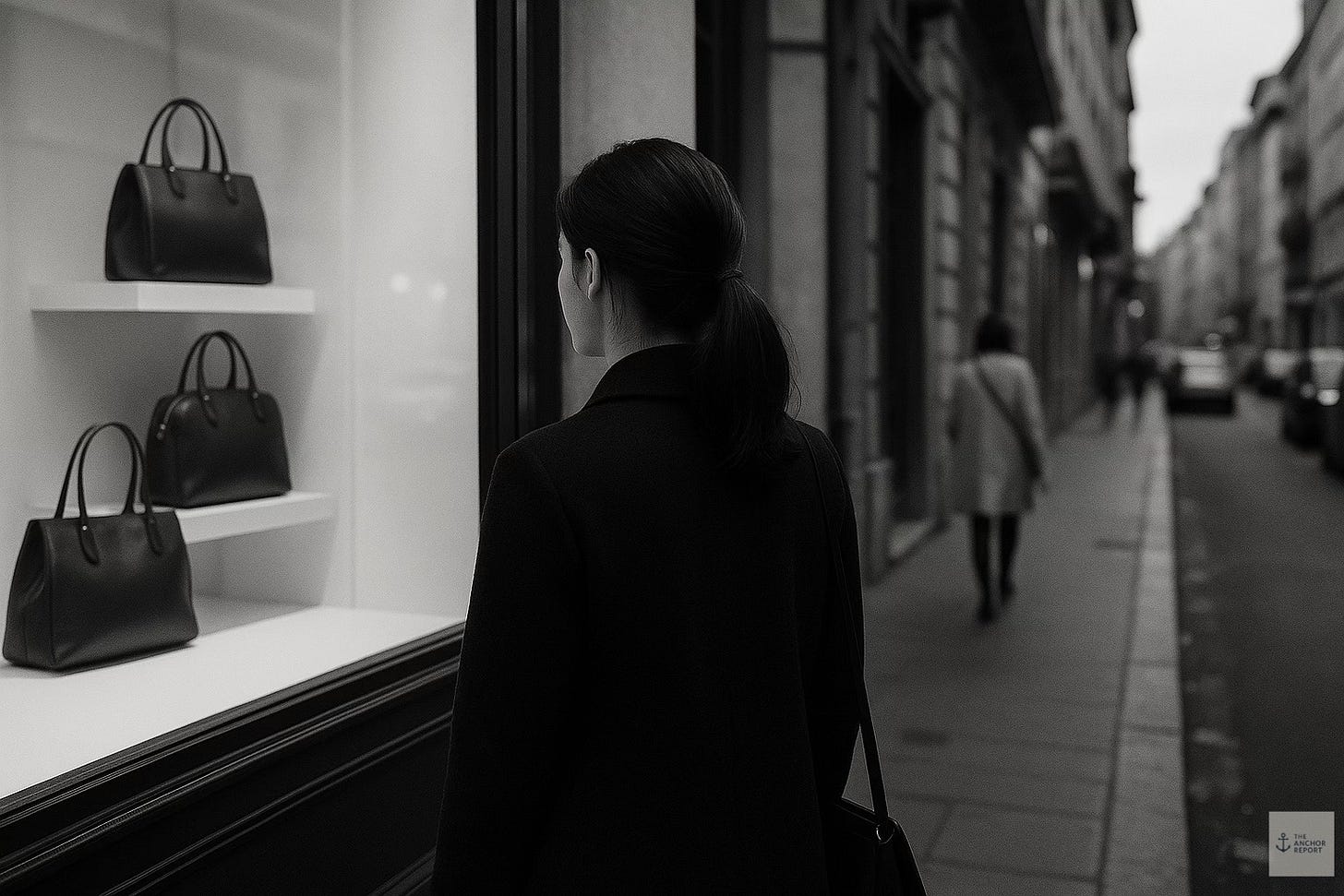Wanting and Freedom
The slow, lived shift from restless wanting to anchored presence.
Yesterday, as I was coming back from an appointment, I had to take the highway, which I rarely use. Not long after merging, I hit traffic. Not the kind that nudges your patience. The kind that simply stops you. A long, unmoving stretch. Cars stacked like dominos under a heavy sky.
What struck me wasn’t the traffic, it was my reaction to it. Or more accurately, the absence of one. I didn’t mind. I wasn’t anxious. I wasn’t wishing to be elsewhere. I just… was.
That wouldn’t have been true a year ago.
For most of my life, I lived inside a constant current of wanting. Wanting things to go faster. Wanting things to be easier. Wanting people to understand, to change, to validate. Wanting for things to make sense. Wanting to arrive. Wanting the noise to quiet. Wanting to feel something else. Somewhere else. Wanting the world to comply with the story in my head.
That day, sitting in traffic, I felt what it meant not to want. Not in a forced way, not through discipline or suppression. But through a kind of quiet recognition. I wasn’t clinging. I wasn’t resisting. I wasn’t needing the moment to be different in order to feel okay.
Later that night, my favorite baseball team was playing in the playoffs. And again, I noticed the shift. I wasn’t glued to the outcome. I wasn’t needing a win to feel good. I wasn’t riding the highs and lows of every pitch. I was present. Watching the game. Feeling it, but not trying to bend it toward a desired outcome. That was new. And strangely beautiful.
This has been one of the most liberating shifts of my life. The realization that so much of my discomfort, frustration, and anxiety came not from what was happening, but from how badly I wanted it to be different.
Wanting is not the same as aspiration. It’s not a clear vision or healthy ambition. Wanting, as I’ve come to understand it, is attachment fused with resistance. It’s a refusal to accept what is. It’s a nervous system gripping the steering wheel of life with white knuckles, unable to relax until the terrain changes.
That’s how I lived for years. And that’s why I suffered. Not because I didn’t have enough, but because I didn’t know how to be with what was.
This shift didn’t come from just a book or a course. It came when I decided something had to change. I began studying mindfulness and how emotions are made seriously, reading, listening, absorbing—then practicing and living it, day after day, for years. Sitting with myself through hard mornings and restless nights. Watching how often my thoughts began with some version of “this shouldn’t be happening” or “I wish it were different.” It wasn’t one breakthrough. It was a slow weaving of study, discipline, and experience—until the concept wasn’t just intellectual, but lived.
It also came from failure. Repeated. Unavoidable. Revealing. Like in trading, where despite deep understanding and experience, I would still find myself trying to control the outcome. Not trusting the system. Not trusting myself. Wanting a specific result instead of engaging with what was unfolding.
When I started letting go, not of standards, but of resistance, things began to move. Not quickly. Not magically. But differently. I wasn’t gripping so hard. I could respond instead of react. I could breathe into moments that used to drown me.
Letting go of wanting is not passive. It’s not resignation. It’s not giving up. It’s learning to live in reality instead of the imagination. It’s building agency from presence, not control.
And yes, I still have desires. I want to build. I want to serve. I want to live with clarity and depth. But these “wants” are no longer fused with desperation. I’m not trying to fix the moment. I’m trying to meet it.
This doesn’t mean it’s easy. Some days I still forget. I still cling. I still wish for something else. But I return faster now. I catch myself wanting, and I soften.
Here’s what I’ve learned: wanting is exhausting. It keeps you in a loop. Not because you’re wrong to have desires, but because you’ve made your peace conditional on them. You’ve outsourced your state of being to the behavior of others or the randomness of the world.
You cannot build clarity in that loop. You cannot build trust in yourself if you’re constantly rejecting the moment. You can’t move with precision if you’re battling reality.
The opposite of wanting isn’t apathy. It’s attention. It’s saying: this is what’s here. And I’m still here too.
The relief I felt on that highway wasn’t because traffic is pleasant. It was because I had stopped resisting. I wasn’t waiting for peace—I was in it. The game didn’t need to go a certain way. The market didn’t need to obey. The day didn’t need to turn.
That kind of peace is available. But only when you stop trying to earn it.
This idea, in its clearest form, comes from Eastern traditions, particularly in Buddhist psychology, where the root of suffering is not pain itself, but clinging. Joseph Goldstein, among others, teaches this with enormous clarity: that suffering arises not from what is present, but from our refusal to let it be. We cling to comfort, we resist discomfort, and in that contraction, we sever our own capacity for peace.
For me, this wasn’t just a theoretical idea. I had to live it, test it. I had to sit in situations I couldn’t control; emotionally, financially, relationally, and watch what came up. Often what came up first was fear, followed by the story of what I should be doing instead. But as I stayed, the noise quieted. Sometimes slowly. Sometimes not at all. But I stayed anyway.
Over time, I started to notice where else I was wanting: wanting certain moods, wanting praise, wanting to not feel shame, wanting time to move faster. Even wanting clarity, in moments of confusion, became a way of rejecting what was. And that’s when I understood: the liberation wasn’t in fixing it—it was in not needing to.
That’s the work. Not to become someone who no longer wants, but someone who sees the wanting and doesn’t get pulled by it. Someone who can say, I see what I’m grasping for and I don’t have to chase it.
I’m not always that someone. But more often, I’m close.
You Don’t Have to Want Less to Begin
Some people don’t experience this intensity of wanting. They’re not driven by the same compulsions. Their nervous systems aren’t wired to resist discomfort or cling to imagined outcomes. But even for them, this work matters.
Because we all live in a culture of craving. Of immediate gratification. Of curated realities. And unless we intentionally practice another way, we get swept into it—bit by bit, until we forget what ease even feels like.
Wanting less isn’t about rejecting ambition. It’s about reclaiming sovereignty. It’s about choosing to act from alignment rather than urgency.
And that choice, over time, becomes freedom.
Anchor
Try this: once a day, notice what you’re wanting. Not the surface-level wants, look for the quiet ones. Wanting someone to respond faster. Wanting the meeting to be over. Wanting to feel different than you do. Wanting to be done. Wanting to be right. Wanting to win. Just name it.
Then pause. Let the wanting be there. Don’t judge it. Don’t fix it. Just say quietly: “This is what I wanted. And I can let it be.”
That’s how the shift begins.
Not with force.
With awareness.
Para leer esta edición en español, haz clic aquí.




